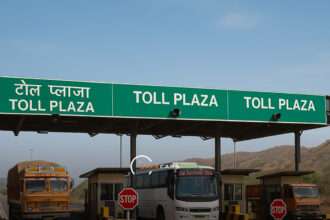The Mahindra XUV700, a promising addition to the SUV lineup, has recently come under intense scrutiny following a distressing incident reported by a Karnataka-based owner, Mr. Irfaq Syed. His concerns delve into the functionality and efficiency of the vehicle’s touted safety features.

Mr. Syed’s incident, narrated extensively on social media platform X, highlighted a collision involving his XUV700 AX7 L and an oncoming motorcycle. Contrary to expectations, the vehicle’s Advanced Driver Assistance Systems (ADAS) failed to deploy as anticipated, raising pertinent questions about the advertised safety standards.
The aftermath of the collision revealed unexpected damages inflicted upon the XUV700. Notably, the airbags failed to deploy, and the Auto Emergency Braking (AEB) system did not engage as the vehicle collided with the oncoming motorcycle. The resulting impact proved severe, with the XUV700 sustaining considerable front-end damage, including dislodged drivetrain and suspension components.
25 Nov, 2023 8:25 am – On a routine trip outside the city, my father and our driver, cruising at an average speed of 45, faced an unexpected turn of events. A 2-wheeler, recklessly speeding, collided with our @MahindraXUV700 AX7L, equipped with ADAS and Auto Emergency Braking… pic.twitter.com/GWtPQKMmzr
— Irfaq Syed (@iRazaSyed) December 16, 2023
Despite the severity of the collision, the occupants of the XUV700, including Mr. Syed’s father and driver, miraculously escaped with no injuries. Conversely, the motorcyclist incurred minor injuries, sparking discussions about the disparity between the expected and actual outcomes concerning the vehicle’s safety features.
Critically, the incident casts doubts on the efficacy of Mahindra’s ADAS suite, particularly the functionality of AEB. It’s revealed that while the ADAS suite is designed to prevent collisions with other vehicles, it lacks the capability to avert crashes caused by oncoming objects.
Moreover, the absence of features like Junction AEB, crucial for monitoring oncoming traffic at junctions, leaves a gap in the vehicle’s safety offerings. Mahindra’s current ADAS suite does not encompass this advanced functionality, potentially exposing limitations in preventing certain collision scenarios.
The issue extends beyond functionality concerns. Complaints regarding the non-deployment of airbags, a critical safety measure triggered by crash sensors, are surfacing among various car owners in India. The need for additional crash sensors at multiple points within the vehicle structure is increasingly evident to enhance safety responses during accidents.
Furthermore, Mr. Syed’s grievances extend to the challenge of parts unavailability. He highlights the prolonged delays and inadequate response from dealer personnel, emphasizing the need for timely and transparent communication regarding parts procurement.
In essence, this incident serves as a clarion call for automotive manufacturers to reassess and fortify safety features in their vehicles. Transparency, responsiveness, and the proactive enhancement of safety technologies stand as imperative pillars in ensuring the promised safety standards for every vehicle on the road.
Mahindra, amidst these concerns, faces a pivotal moment to address these issues comprehensively, ensuring that vehicle safety aligns with the advertised standards and customer expectations.





Would you be excited about exchanging links?